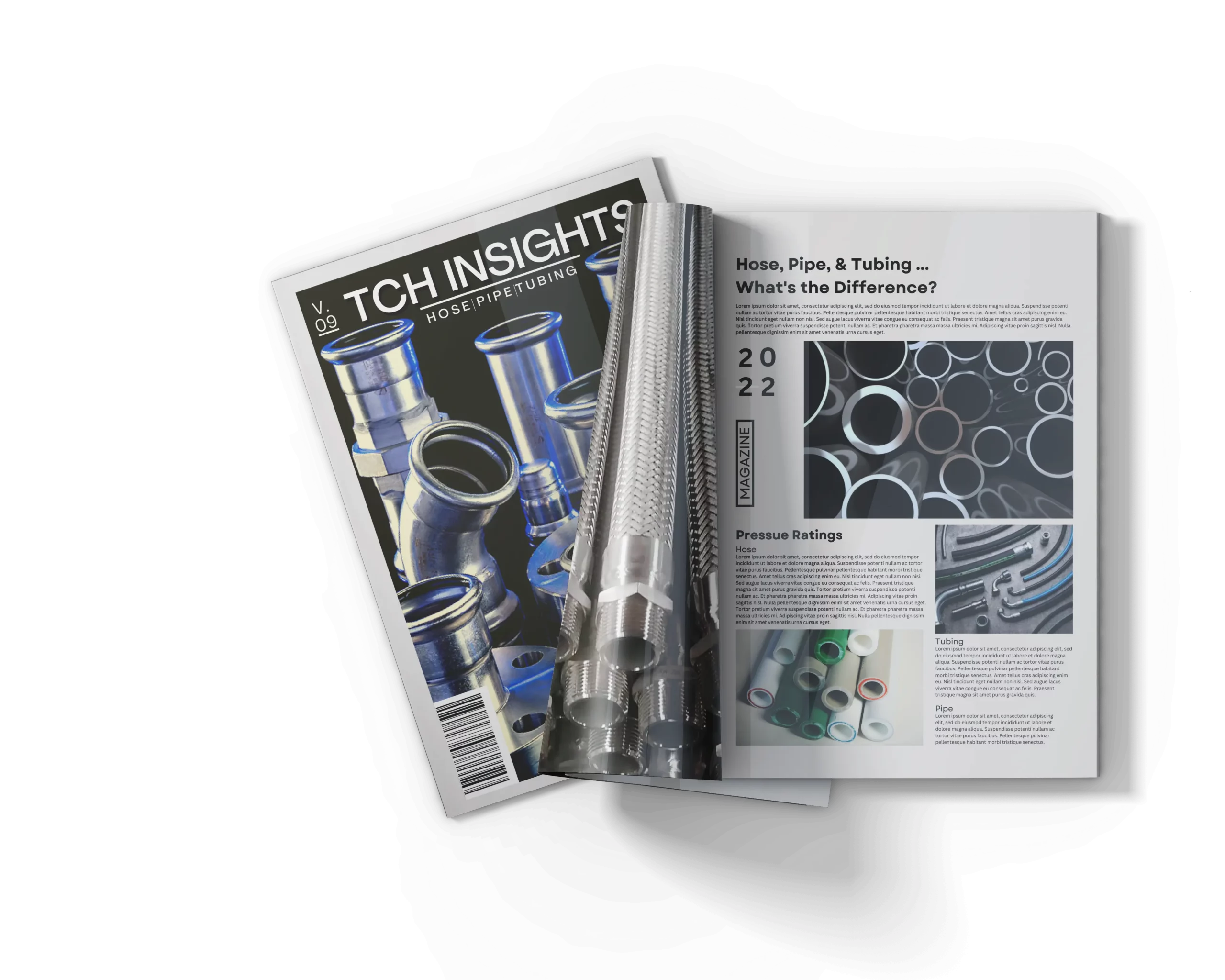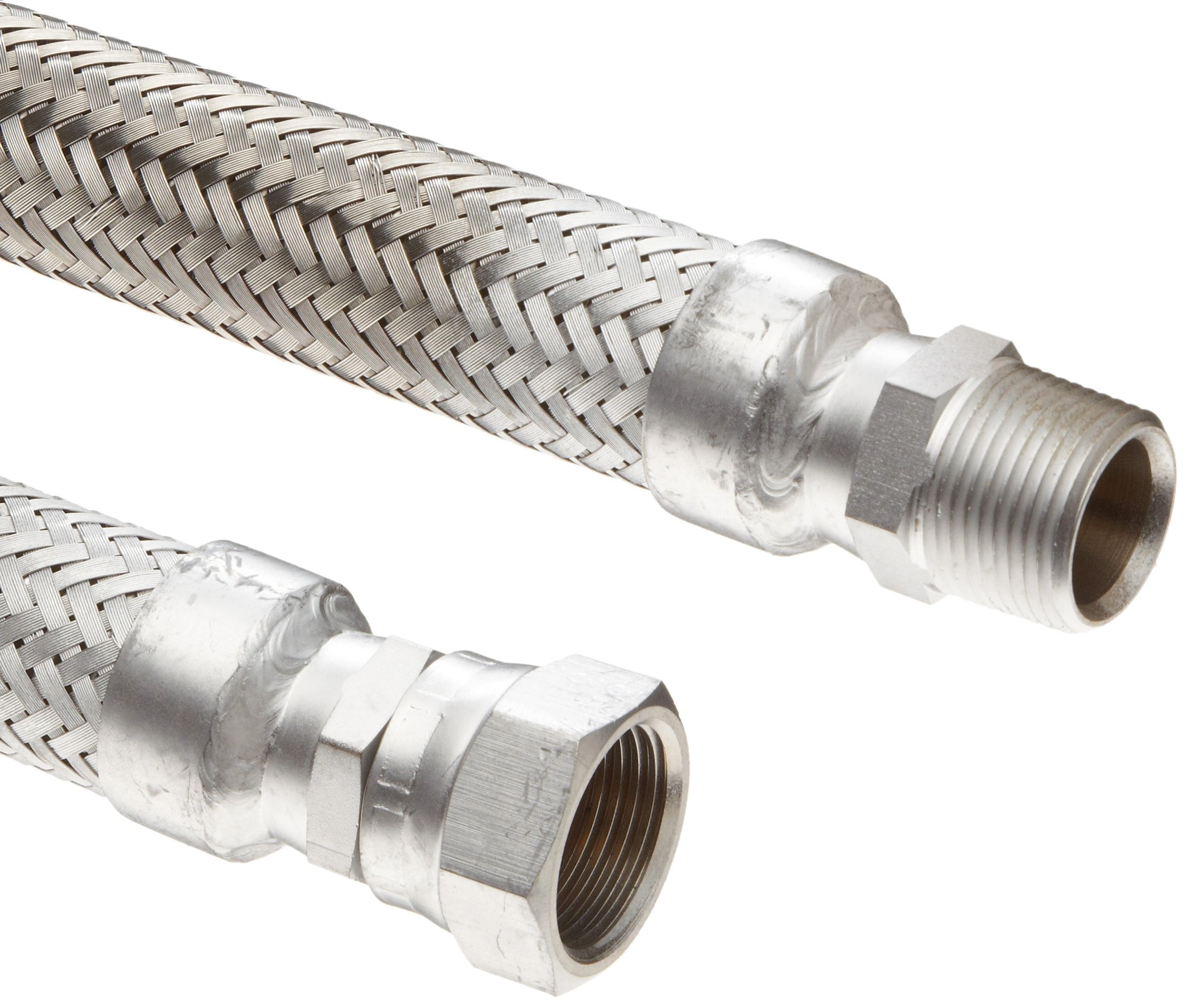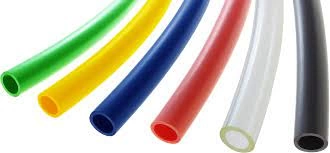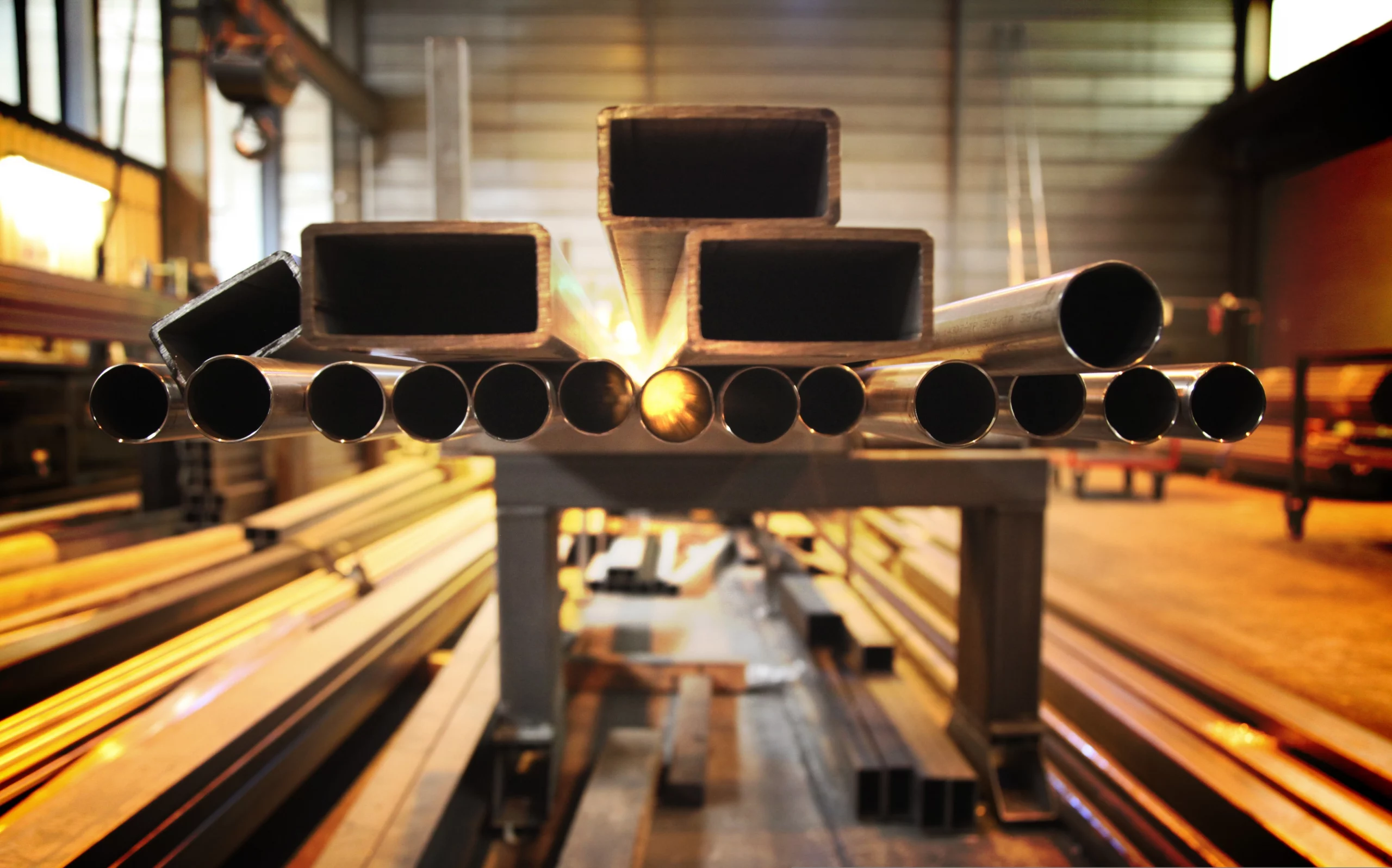HOSE, PIPE, & TUBING …
WHAT’S THE DIFFERENCE?

Hose, pipe, and tubing and common methods of transferring fluids through a system, or even from one location to another. There are common applications for each, such as higher pressures for hose, the flexibility of tubing, or the ability to bury or conceal pipe. There’s not always a clear and concise answer on when and where to use each. We will further explain how you can decide which best suits your application.
WHAT IS HOSE USED FOR?
Hoses are typically categorized by hydraulic or industrial applications. A good way to differentiate between the two is that hydraulic hoses are used in a high pressure closed application. Industrial hoses are generally used to convey media in an open application.
A simplified explanation of a closed application is where media is looped from a reservoir, to a pump, then to a cylinder, then the media is conveyed back to the original reservoir. An open application is where media is conveyed from a tank or reservoir to a pump, then to another tank, reservoir, or into the open air.
HYDRAULIC
Hydraulic hoses are generally recommended for applications, such as excavators, lifts, and log splitters, or are used as vibration dampeners in highly vibration prone applications. Hydraulic hoses commonly have a rubber cover with steel wire reinforcement and nitrile or SBR tubing.
INDUSTRIAL
Industrial hoses, on the other hand, tend to have lower pressure ratings. That’s not to say industrial hoses don’t sometimes have higher pressure ratings. Applications such as air and water hoses for suction and discharge operations and expandable garden hoses don’t require the pressure ratings that hydraulic systems do.
METAL
High temperatures, high pressures, and harsh chemicals are conditions to consider when deciding between hose, pipe, and tubing. Metal hose can be a highly effective option. Corrugated metal hose can be manufactured using various alloys to withstand highly corrosive chemical applications. Extreme temperatures is another common condition in which metal hose is used.
On one hand, we have very hot applications up to 1300°F. On this end of the spectrum, we have two considerations: outside environmental conditions, such as an assembly near a furnace in a steel mill; or, internal process conditions, like combustion gases or hot air for test facilities.
On the other hand, you may need to consider using metal hose for very cold (cryogenic) temperatures, -325°F and lower. The colder the temperature, the better they get. When thinking about your end connections, remember that carbon steel has an effective temperature range of 0-800°F; outside this range, its properties diminish quickly.

THERMOPLASTIC
Commonly used in medium- to high-pressure applications, thermoplastic hoses fair well with mobile and industrial machinery. Applications such as boom lifts, that are always moving, can take advantage of thermoplastic hose’s smooth exterior to avoid abrasion and degradation from constant friction. Other applications for flexible hoses include gas assemblies in which the hose is perforated, car haulers because of their non marking attributes, forklifts as thermoplastic retains its shape when stretching and contorting, and as ambient temperature nitrogen assemblies.
WHAT IS TUBING USED FOR?
Tubing has multiple functions across various industries, such as pneumatic systems, farming applications, fluid transfer, medical and sanitary applications, automotive, and medical applications. Plastic tubing offers unique cost, strength, and corrosion resistance.
WHAT IS PIPE USED FOR?
When it comes to fluid transfer, sometimes metal piping, either carbon or stainless steel, is preferred. Whether for cost, cosmetic, or stability reasoning, such as running pipe through rafters in structural applications without having to worry about dangling hoses, there are various reasons to consider metal pipe for your application.
HOW IS HOSE MANUFACTURED?
RUBBER HOSE
Unlike tubes and pipes, rubber hose consists of three basic elements: inner tube, reinforcement, and the outer cover. The inner tube maintains a flexibility while also being able to withstand the material it carries. For example, Nitrile has excellent compatibility with oils and standard hydraulic fluids. The reinforcement surrounds the inner tube and gives the hose strength, as well as the ability to hold pressure.
Types of Reinforcement
- Wire braid: offers a wide pressure and flexibility range along with properties tailored to specific applications.
- Wire spiral: used in high-pressure applications where service life is critical, or in a high impulse applications.
- Textile reinforcement: ideal for applications requiring lower pressure ratings and high flexibility, such as air hose applications or low pressure water applications.
Finally, we have the outer layer or cover, which protects the reinforcement from abrasion, corrosion, chemicals and ozone. The outer layer is often weather-, oil-, or abrasion-resistant depending on how the manufacturer designed the hose for specific environments.
METAL HOSE
Metal hose is typically manufactured in one of two ways:
HYDROFORMING
The manufacturing process of Hydroforming grabs a section of tube, expands it without torsion using high pressure water, while simultaneously feeding the tube in axially from both directions.
CRIMPFORMING
The crimpforming method grabs a section of tube, compresses it without torsion using a “shuttercrimp”, while simultaneously feeding the tube in axially from both directions.
To learn more about these methods, check out the full process from our friends at Hose Master: https://www.hosemaster.com/corrugated-metal-hose/
HOW IS TUBING MANUFACTURED?
The two methods of manufacturing plastic tubing are extrusions and pultrusion. The difference between the two is how the molten plastic moves through the die. Extrusion pushes the plastic through the die, whereas pultrusion pulls the material through.

HOW IS PIPE MANUFACTURED?
Pipe is manufactured using an extrusion process, in which the tube is drawn from a solid stainless steel billet and extruded into the hollow form you see.

We Are Hosers.
Our focus and obsession is the distribution, fabrication, and manufacturing of hose assemblies for industry and hose related products. Founded nearly 40 years ago, we are proudly owned and operated by the same family. Our manufacturing partners are some of the biggest and best names: Eaton, Parker, Dixon Valve, Hose Master, Brennan, Hannay Reels, and many others.
In short, we are a customer-centric hose company filled with happy professionals who can help you meet all your hose related needs.
